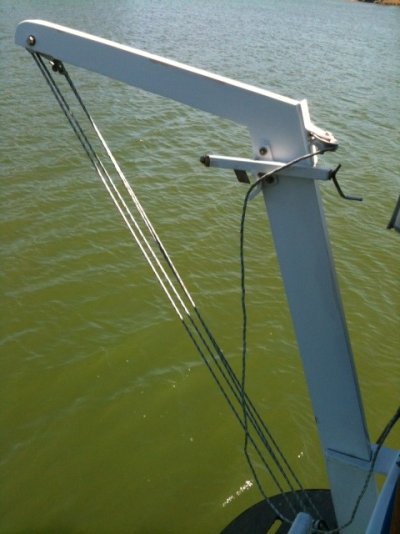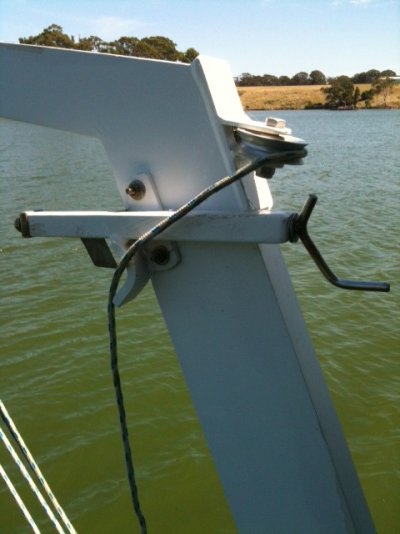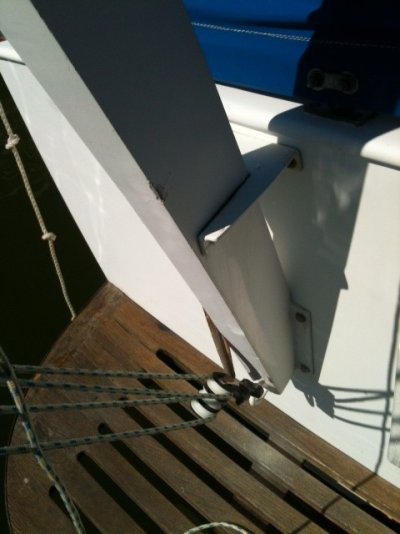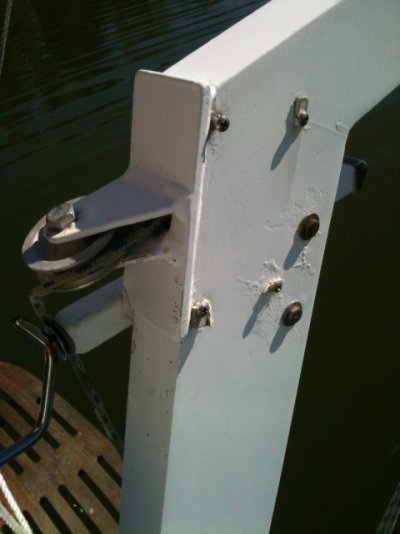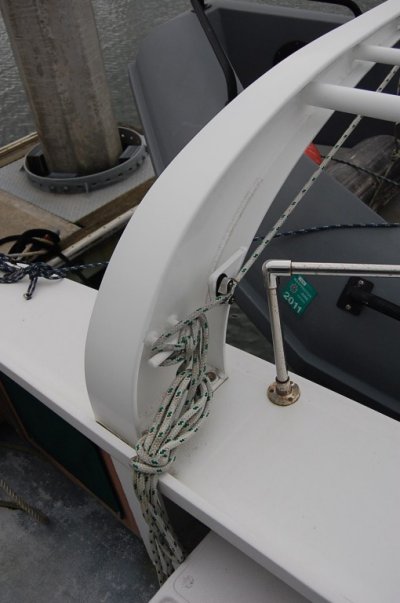JanisK
Veteran Member
- Joined
- Aug 8, 2011
- Messages
- 88
- Location
- Australia
- Vessel Name
- NightinGayle
- Vessel Make
- Tradewinds 42
Hi.* Hopefully I can tap into the experience of the forum.
Unfortunately I dont have access to the PO to ask this question.* I have also searched high and low on the web to no avail.* It relates to the davits on Gemma.* I'm in the process of buying a tender and obviously would like to use the davits when I get it.* However it seems that part of the rope winding mechanism is missing.* I'll try to explain.
As you will see in the pictures below each of the davits has a line that extends from the block through the davit exiting at the forward top of the davit to a horizontal pulley wheel.* From there there is nowhere for the line to go yet on each davit there is a winding handle with a thread and captive nut mechanism that when it is turned slowly moves a flat diagonal steel piece back and forth depend on the direction the handle is wound.* the opposite side of each davit has some remaining screws and nuts to which something was once fastened.
Presumably the winder somehow attached to a reel onto which the line wound on and off depending on if the tender was being raised or lowered.* But what mechanism would utilise the handle/captive bolt and flat metal piece to connect to the now missing reel?* As there is also no evidence of any cleats I'm presuming that the missing mechanism had some sort of lock/catch to prevent unintentional release of the line.
Gemma is a 1985 Tradewinds 42 and I'm guessing the davits were likely installed sometime between 1985 and 2006ish.
Any ideas or suggested davit suppliers who may be able to help?*
Thanks
Janis Kinne
Unfortunately I dont have access to the PO to ask this question.* I have also searched high and low on the web to no avail.* It relates to the davits on Gemma.* I'm in the process of buying a tender and obviously would like to use the davits when I get it.* However it seems that part of the rope winding mechanism is missing.* I'll try to explain.
As you will see in the pictures below each of the davits has a line that extends from the block through the davit exiting at the forward top of the davit to a horizontal pulley wheel.* From there there is nowhere for the line to go yet on each davit there is a winding handle with a thread and captive nut mechanism that when it is turned slowly moves a flat diagonal steel piece back and forth depend on the direction the handle is wound.* the opposite side of each davit has some remaining screws and nuts to which something was once fastened.
Presumably the winder somehow attached to a reel onto which the line wound on and off depending on if the tender was being raised or lowered.* But what mechanism would utilise the handle/captive bolt and flat metal piece to connect to the now missing reel?* As there is also no evidence of any cleats I'm presuming that the missing mechanism had some sort of lock/catch to prevent unintentional release of the line.
Gemma is a 1985 Tradewinds 42 and I'm guessing the davits were likely installed sometime between 1985 and 2006ish.
Any ideas or suggested davit suppliers who may be able to help?*
Thanks
Janis Kinne


